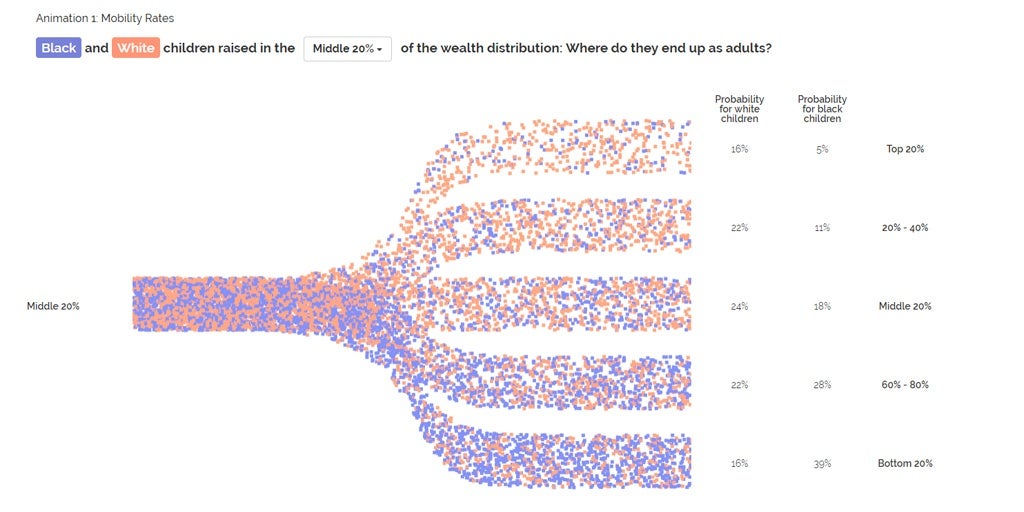Jason Beckfield, our associate director and Harvard sociologist, COMMENTS on a study that documents intergenerational social mobility over the past 165 years, applauding the study’s strengths (e.g., differentiating between relative and absolute mobility; large amount of data) and outlining some of its limits (e.g., ethnicity and gender are weak spots in population composition; lack of explanation).
Looking beyond poverty: impact of “toxic” neighborhood environments on social mobility
Harvard Pop Center faculty member Robert J. Sampson is co-author of a paper published in PNAS that has found that a harsh neighborhood environment—high in violence, incarceration and lead levels—is linked with lowered social mobility later in life, after accounting for concentrated poverty and racial composition. Robert Manduca is also a co-author on the paper. Photo by Kat Wilcox from Pexels
Persistent, intergenerational racial wealth gap clearly illustrated via animated data visualization
Harvard Pop Center faculty member Sasha Killewald, and co-author Fabian T. Pfeffer have published an article in Socius that leverages animated graphics fueled by JavaScript to creatively illustrate a racial (black vs. white) wealth gap. Findings suggest that both the starting point of past generations, along with “continued institutionalized discrimination,” contribute to this inequality. The graphic is showcased in this piece published in U.S. News and World Report on economic…


